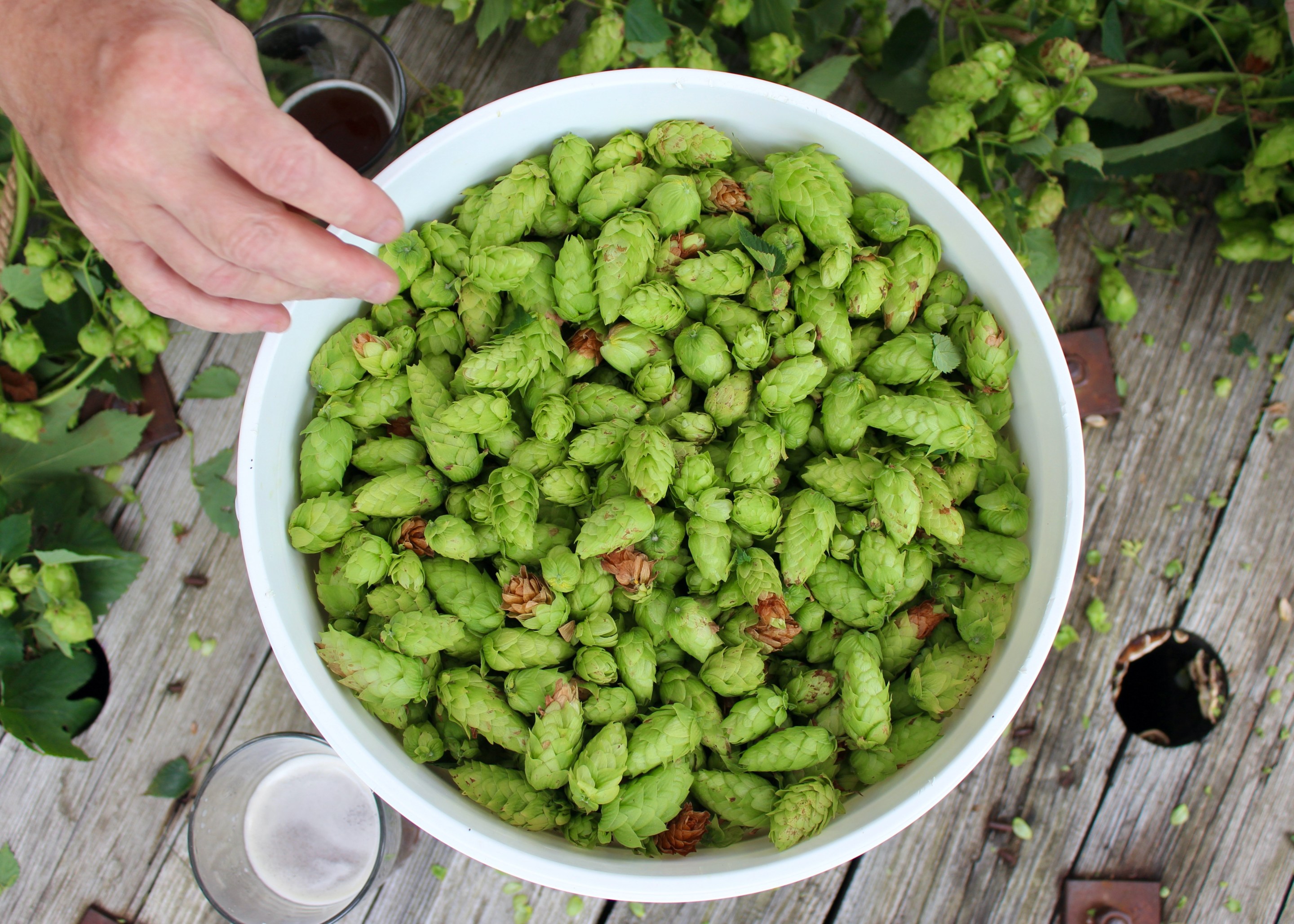Before pulling up roots to build the farm brewery he’d dreamed about, Mike McQuery had one key question: Can hops even grow in Minnesota?
“I grew up in Oregon. You drive out in the country, and… there's acres and acres of hops,” says McQuery, co-owner and head brewer at Half Pint Brewing Co. in Waseca. “You know: ‘That's a hopyard. That's how hops grow. They're used in beer.’ Even as a kid, I knew that.”
The state’s top hop researcher at the time told McQuery, “Yes,” so the former Oregonian plowed ahead. Half Pint opened in 2018, as Minnesota’s first farm brewery and taproom. There’s beer, food, music, and community, especially at the brewery’s annual hop-picking party. It would be McQuery’s dream come true if not for one issue: the hops.
“They’ve just never grown here like I expected,” he says.
As a main ingredient of beer (along with water, malt, and yeast), hops provide bitterness and aroma. They also act as a natural preservative. This was a crucial breakthrough over the last millennium of beermaking. It’s the reason why hops replaced Europe’s “gruit” spice mixes, which blended main ingredients of rosemary, laurel, or yarrow with ginger, star anise, sage, and on and on. With its longer shelf life, beer could now be enjoyed far away from where it was made.
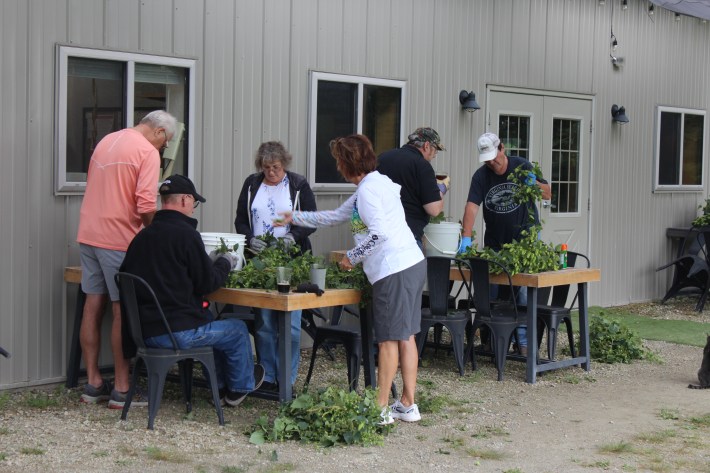
Today, the U.S. accounts for 35% of the $8 billion dollar global hop industry, per the Hop Growers of America. And 98% of U.S. hop production occurs in Washington, Oregon, and Idaho. But that wasn’t always the case.
“Hops were grown in our region in the mid-1800s,” says Eric Anderson, president of the Minnesota Hop Growers Association and owner of St. Croix Valley Hops. “But it moved to the Pacific Northwest mainly because of our humid climate, which is a key factor needed in the development of the main disease we fight, downy mildew.”
Hop growers in Minnesota face unique challenges that have left many with a bitter taste in their mouths. Dr. Joshua Havill, a postdoctoral researcher at the University of Minnesota, aims to change that.
Drawing on his research in hop breeding, pathology, and genetics, Havill is working to create a hardy Minnesota hop variety that thrives in our climate and is naturally resistant to disease. He believes this would benefit farmers and brewers alike, so that, as with Marquette grapes and Honeycrisp apples, it’s not just feasible to grow in Minnesota but also profitable.
A novel hop variety with even a modicum the Honeycrisp’s success—the apple, as MinnPost notes, is one of the top six varieties in the U.S., a source of $16.5 million in royalties to the U as of 2019, and the official state fruit—could create significant opportunities for local growers and brewers.
So why don’t we have it yet?
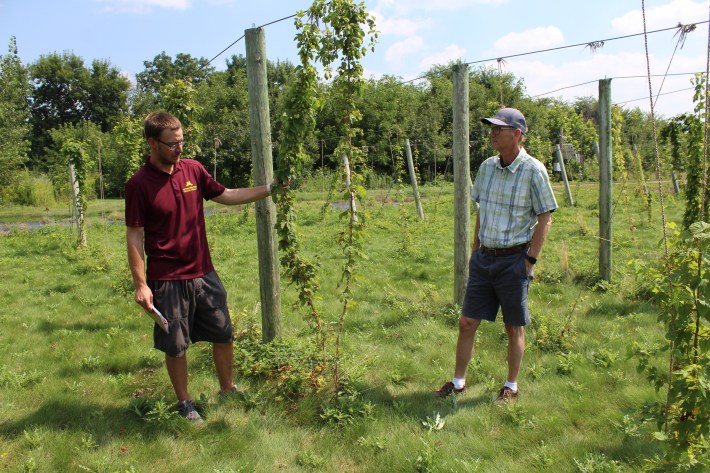
A Walk Through the Wild Hop Core Collection
At the U of M’s St. Paul campus, birthplace of the Honeycrisp, Havill tends the Wild Hop Core Collection with his supervisor, Dr. Gary Muehlbauer, head of the department of Agronomy and Plant Genetics. Comprising roughly 400 varieties, this hopyard is likely the most diverse collection in the world, Havill says. It encompasses commercial varieties like Cascade and Comet; samples from Japan, Georgia, Canada, and other countries; and numerous wild specimens from Minnesota.
“Hops are native to the northern hemisphere, but have been introduced into areas in the southern hemisphere for agricultural production,” Havill says. “On occasion, I’ll encounter a wild hop somewhere. I went on a 6,000-mile road trip this fall to collect hops, and I was fairly successful.”
Hops are an herbaceous, perennial “bine,” Havill explains. Common hops—aka Humulus lupulus, meaning “little wolf of the woods”—use tendrils on their leaves and hooked hairs on their stems to climb. The dioecious plants could be male or female, though he’s observed them switch back and forth.
Hopyard planting starts with propagating rhizomes, budded sections of a plant’s root system. The plants spiral up coir twine made from coconut husks to the top of an 18-foot-tall trellis—or 7 feet tall, at the WHCC.
“The actual hop that's used [in beer] is an inflorescence. Each individual petal is subtended by two flowers,” Havill says. “So, an actual hop cone can be 50 to 100 flowers in size.”
Havill started down this path at the U as a transfer student in 2013. Searching for a lab job, he noticed only one person was studying hops. “Beer roped me into it. And it's just kind of ballooned since then,” he says.
This collection started as approximately 7,000 seedlings grown in a lab. The researchers then performed experiments on subsets of the collection to identify and characterize novel forms of powdery mildew and downy mildew resistance.
Havill and Muehlbauer want to take the research further to create a Minnesota-made hop. They’ve identified several potential varieties. The next step would be to have farmers grow the hops to test their hardiness, and then brew with them to evaluate flavor.
Obtaining research funding has been the main holdup. If that continues to lag, the two could try to capitalize on interest from companies like Hopsteiner and Carlsberg that have asked for access.
“The material here is quite valuable, and a lot of people recognize the value,” Muehlbauer says. “We just have to figure out: How do we get enough money to actually exploit the value out here?”
“So,” Havill says, “if you know any angel investors…”
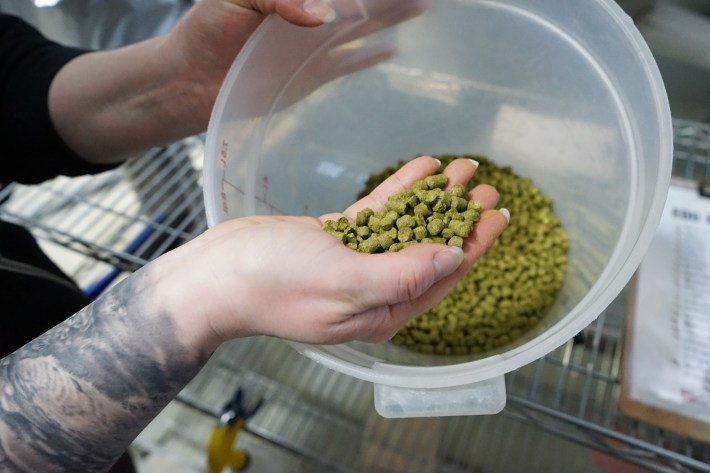
“Everything's Going to Have Its Challenges”
Growing a Minnesota-made hop requires demand and time. “It takes about three years to get a hopyard into full production,” says Anderson of the Minnesota Hop Growers Association. And operations require specialized equipment for harvesting, roasting, and storing, which happens from mid-August through September.
The hops must survive Minnesota’s brutal winters, as Luxy 13 Hops in Watkins learned. After planting one acre in 2018, only 20% of the crop survived the first winter, according to Cory Rausch who owns and operates Luxy 13 with his brother, Clinton Rausch, and two business partners. Still, Luxy 13 recovered—largely by propagating its own plants. Today, they grow nearly an acre of hops, with a mix of varieties for aroma and bittering.
Still, a major challenge for local hop growers is that many of the buzziest varieties are patented or trademarked, including Mosaic, Simcoe, and Citra. It’s cost prohibitive—or simply prohibited—to grow them anywhere besides the Pacific Northwest.
The Rausches started Luxy 13 on a 100-acre farm that’s been in their family for more than 150 years as a way to participate in the craft beer community. The name refers to Luxembourg Township, where the farm is located, and the area’s history with another U of M-created crop: Minnesota 13 corn.
“During Prohibition, you could go into speakeasies from Florida to California and order Minnesota 13, and you’d be getting moonshine from Stearns County, Minnesota,” Rausch says.
But Rausch isn’t convinced a Minnesota hop would garner such widespread enthusiasm—or be a panacea for growers. “We think everything's going to have its challenges,” he says.
Currently, there’s an abundance of hops in the market as craft beer’s slump continues, further pinching growers’ margins. Hop production in Minnesota peaked in 2020 with about 120 acres statewide, but has dwindled to about 45 today, according to Havill.
The abrupt closure of Mighty Axe Hops in Foley accounted for much of this loss. After sustaining damage from a major storm in 2020, all 80 acres were lost, with zero opportunity to rebuild.
After nine years, Mighty Axe was finally generating enough business to be solvent. But aside from a few large accounts in Minnesota, most sales came from outside the state, according to former owner Eric Sannerud.
Now, as a part-time consultant for hop growers, Sannerud foresees major struggles for a Minnesota-made hop to gain traction. Growing hops here costs more, it’s harder, and without the ideal climate and generational knowledge, overall quality may suffer.
“It's hard, and you have to be kind of crafty, and you have to pick your varieties carefully, and hope for better weather than we usually get, or maybe find the varieties that happen to do well here, and then convince brewers to use those varieties,” Sannerud says. “But if brewers wanted local hops, they could have them.”
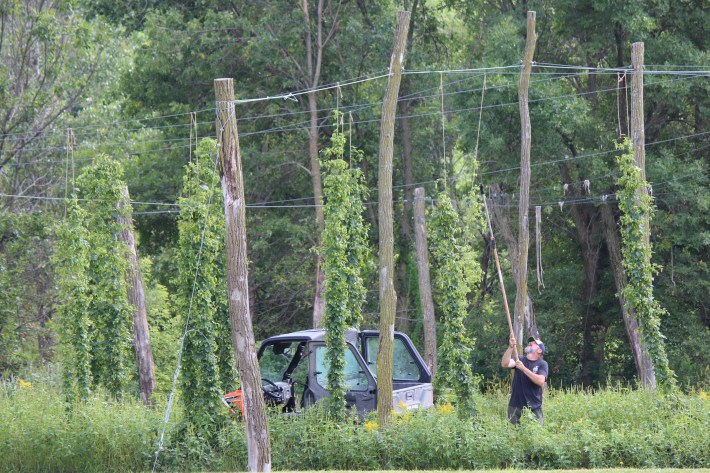
The Case for Local Hops
And some do. Growing hops in Minnesota provides advantages for brewers, including opportunities to differentiate and capture unique flavor and aroma characteristics by timing harvest with the grower.
These reasons motivated Tremendous Brewing Co. in St. Peter to collaborate with Kohnert Organic Farms—from planting before the brewery opened last year to hosting a hop-harvesting event at the farm this summer.
“Utilizing a locally grown product is much about the relationships, the support we can give someone local,” brewer Kurt Stoel says. “As this is the first crop, we'll have a fun experiment to see just where these hops end up on the flavor spectrum. While we certainly know the variety, any effects of terroir will just have to be seen.”
Lane Wanous, co-owner and head brewer at Bobbing Bobber Brewing Co. in Hutchinson, began buying hops from Luxy 13 three years ago for similar reasons.
“The relationship between the hop farmer and brewer is more one on one, and it's always fun to promote and say that you are using local ingredients,” Wanous says. “Customers also think it's neat that the pint they are drinking has local ingredients.”
For his part, Havill believes that growing hops locally helps the market by reducing dependence on a few large suppliers. Minnesota could encourage growers now by, for example, offering tax incentives that encourage breweries to use local ingredients or developing a farm brewery license similar to those available for farm wineries.
But the end goal for Havill remains creating a Minnesota-made hop variety.
“My hope is to make an impact in our specialty agriculture community by developing something that makes it profitable for our hop growers and hop farmers and our brewers to utilize for their businesses ultimately to be successful,” he says.
Stoel, Wanous, and McQuery would gladly try out Havill’s Honeycrisp of hops.
“If Josh came up with something that was pretty downy-resistant and grew well here in Minnesota, I would always be open to growing them and using them in our beer,” McQuery says.
Despite his initial disappointment, McQuery doesn’t plan to stop growing hops. At Half Pint’s annual hop-picking party in late August, he stopped at tables to chat with customers as they sipped beers and tossed Cascade hop cones into buckets. He’d answer questions about how hops grow, how they’re used, and take people down to the hopyard to see for themselves.
Part of the craft beer ethos has always been that the closer we are to the ingredients, the processes, and the places that make beer, the closer we are to one another. Maybe that’s not the most convincing rationale on a grant application or business plan. But for McQuery, it’s enough to keep the dream alive.
